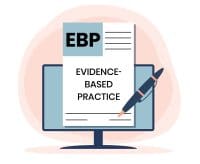Most well-respected journals are peer reviewed, although controversy exists as to its true value. The International Committee of Medical Journal Editors (ICMJE), which publishes “ICMJE Recommendations for the Conduct, Reporting, Editing, and Publication of Scholarly Work in Medical Journals,” acknowledges the controversy but points out that peer review “facilitates a fair hearing for a manuscript among members of the scientific community. More practically, it helps editors decide which manuscripts are suitable for their journals. Peer review often helps authors and editors improve the quality of reporting.”
Most authors would agree that peer reviewers can provide valuable insights that enhance their manuscripts. And serving as a peer reviewer can help you improve your own writing.
Peer reviewers can be researchers, clinicians, or both, but no matter what your background, understanding the review types and following three steps when you conduct a review will help you contribute to the nursing profession’s body of knowledge.
Types of peer review
The three types of peer review are double blind, single blind, and open.
In a double-blind review, the most common type, neither reviewers nor authors know each other’s identities. The reasoning behind this approach is two-fold. First, anonymity minimizes any bias (positive or negative) reviewers might have if they knew the author’s identity. Second, reviewers are more likely to give honest feedback if they don’t fear authors knowing who they are.
In a single-blind review, reviewers know information about the author but the author doesn’t have any information about the reviewers. This review frequently is used with grant requests, where it’s important for reviewers to know the qualifications of the investigator when evaluating the request. Some believe that knowing authors’ identities and affiliations may provide a helpful perspective for reviewers.
As the name conveys, in an open review, reviewers know the authors’ identities, and authors know who the reviewers are. Those who advocate for open review believe it holds peer reviewers accountable for their review; in fact, some journals publish the peer review comments with the journal article. Currently, open review is rare in nursing journals.
No matter which type of review you’re conducting, you’ll need to take a systematic approach to ensure your review has maximum benefit. But first, here are a few grounds rules:
- Be the reader’s advocate. Readers want accurate information that helps them in their practice or advances the knowledge base of the profession.
- To ensure you’re a good advocate, understand the journal’s readers and purpose of the journal—and the manuscript. For example, is the content for researchers, new clinicians, or nurses with a wealth of expertise?
- Try to help authors improve manuscripts, not discourage them from writing. Be professional and kind when providing feedback. Even if you have to recommend rejection, it’s rare that you can’t find something positive to write.
- Be specific, constructive, and objective. (Don’t let your personal views of the topic interfere. For example, as a nurse informatics expert, you may have strong views on how an electronic health record should be implemented, but the authors didn’t follow your preferred approach. However, it may be that they simply used a different, but equally effective strategy. The key is whether the strategy was evidence-based and whether the authors provide evidence of its effectiveness. )
With these rules in mind, you’re ready to start your review, using three simple steps.
- Read the entire manuscript
It can be tempting to start commenting as you first read the manuscript, but it’s far better to restrain yourself. Reading without interruption allows you to gain a better feel for the overall flow of the manuscript. As you read, consider the tone (and whether it fits with the tone of the journal), how easy it is to follow the content, and whether it provides value to the journal’s readers.
During this initial read, you may discover you should not serve as a reviewer; for example, you may have reviewed a draft of the manuscript for a colleague. In this case, contact the editor immediately to discuss the issue.
- Evaluate each section
Research manuscripts typically have introduction, methods, results, discussion, and conclusion sections. Clinical and other manuscripts may be broken down into introduction, main content (the “body” of the article, which may have separate headings), and conclusion. Case studies usually have a description of the patient followed by actions taken and a discussion. The point is to identify the main sections and then evaluate each one.
As you read each section, Cindy Munro, PhD, RN, ANP-BC, FAAN, FAANP, co-editor of American Journal of Critical Care, recommends making notes in three areas: positives, problems, and potential improvements. It can be easy to focus only on the negative, but identifying positives reinforces what the author has done well—and makes the negatives a bit easier to read. It’s also helpful to provide possible solutions to problems, within reason; if you feel the manuscript isn’t going to be suitable for publication, you don’t need to provide copious notes. Instead, highlight the main problem areas.
Depending on the manuscript, you might want to use the checklists that accompany guidelines for writing various types of articles. For example, you can use CONSORT for clinical trials and PRISMA for systematic reviews. (You can access many of these guidelines at equator-network.org/library/translations-of-reporting-guidelines/.)
In addition to the overall content, pay particular attention to the title and abstract. After all, these are what will get read most often. Be sure that both accurately reflect the manuscript.
Remember that your goal is to provide feedback on the content, not edit the manuscript.
- Write the review
Many journals provide a checklist for you to complete, but you’ll also be able to enter comments. As a reminder, be specific, constructive, and objective. For example, if you don’t think the manuscript flows well, rather than simply stating “no,” provide a suggestion for an alternative.
In some cases, you’ll be asked to write a narrative review. You can organize your review in this format:
- succinct overview of the content
- overall opinion of the manuscript (positives and negatives), including value to readers
- summary of your notes for each section (or, you can organize by major and minor comments).
Some journals allow you to make notes within the body of the manuscript. If so, use a different color font so your comments are clear. If you use the track changes feature in Word, adjust your settings so your name does not appear in the comment box.
Other journals will want you to list comments by referring to the line or section related to the comment or the figure/table number. For example:
- Line 14: It’s unclear as to the source of the statistics.
- Figure 3: This does not seem to add to the value of the paper and may be confusing to readers unfamiliar with the concepts presented.
Editors and authors will find it helpful to know how serious you think the problems are and whether you think they can be fixed. In addition, keep in mind that your comments will be shared with the author.
You’ll usually be asked your level of recommendation related to publishing the manuscript: accept, accept pending revisions (based on the reviewers’ comments), revise and resubmit (when fairly extensive revisions are required; the manuscript may need to undergo another peer review after revision), or reject.
Tracking your work
Any information related to specific reviews is confidential, even after the manuscript is published. However, you should keep track of your peer review contributions because you can use the data in advancing up the clinical ladder or achieving tenure.
You might want to create a profile in Publons (publons.com), which automatically updates your reviews with its publishing partners. If the journal you reviewed for isn’t a partner, you can forward review confirmation from the journal’s editor to Publons so that it’s added to your profile. You also can link your Publons profile with your ORCID (orcid.org) profile. Be aware, however, that Publons may contact you about doing reviews, and some nurses have complained about receiving too many emails.
You also may want to improve your peer review skills by accessing online education materials. Options include:
- BMJ (bmj.com/about-bmj/resources-reviewers/training-materials)
- Elsevier (elsevier.com/navigating-peer-review/certified-peer-reviewer-course)—free registration required
- Wiley (authorservices.wiley.com/Reviewers/journal-reviewers/how-to-perform-a-peer-review/index.html)
A valuable service
Serving as a peer reviewer provides a valuable service to the profession and can benefit you professionally as well. Following these three steps will help ensure you provide the best possible feedback.
References
International Committee of Medical Journal Editors. Recommendations for the Conduct, Reporting, Editing, and Publication of Scholarly Work in Medical Journals. December 2019. icmje.org/recommendations
Mullan Z. How to write a helpful peer review report. Researcher Academy. researcheracademy.elsevier.com/navigating-peer-review/certified-peer-reviewer-course/31-write-helpful-peer-review-report
Munro C. Writing a peer review. In: Saver C. Anatomy of Writing for Publication for Nurses. 3rd ed. Indianapolis, IN: Sigma Theta Tau International; 2017;165-79.
Saver C. Anatomy of Writing for Publication for Nurses. 3rd ed. Indianapolis, IN: Sigma Theta Tau International; 2017.



















